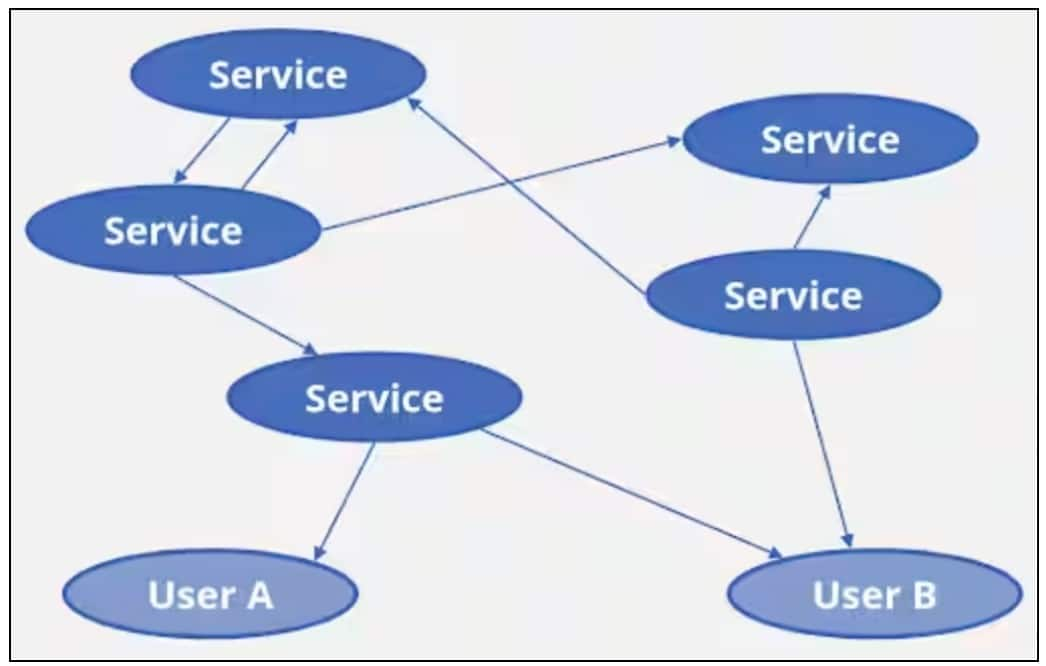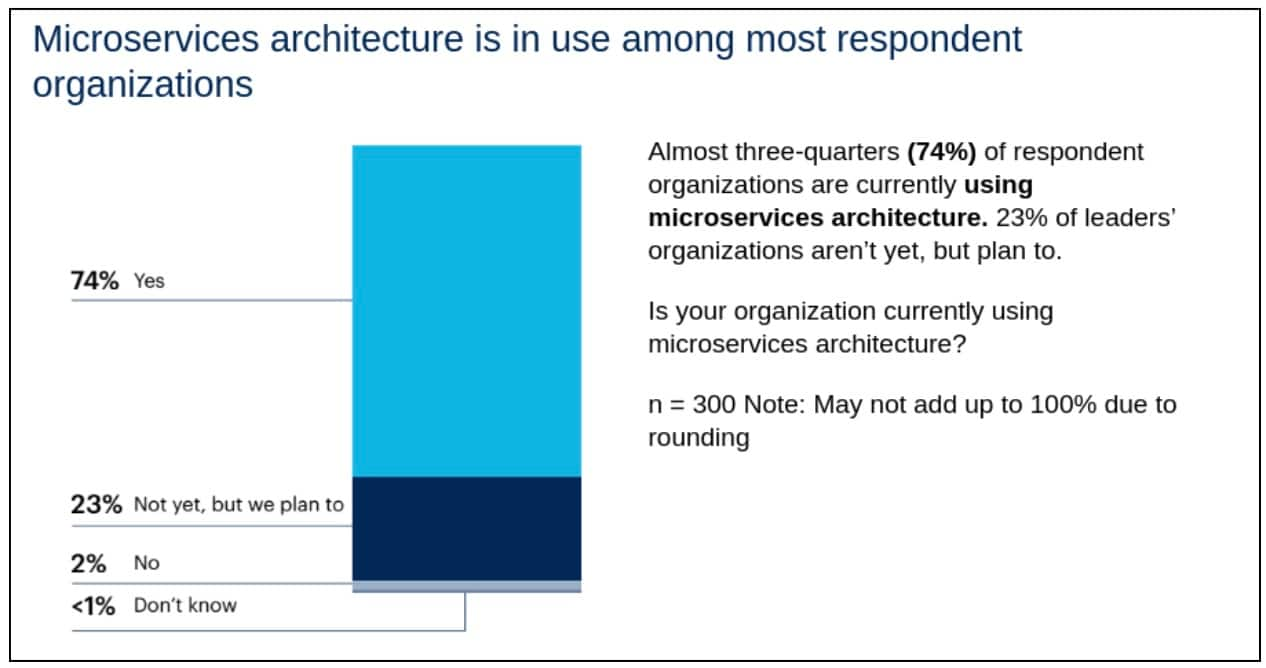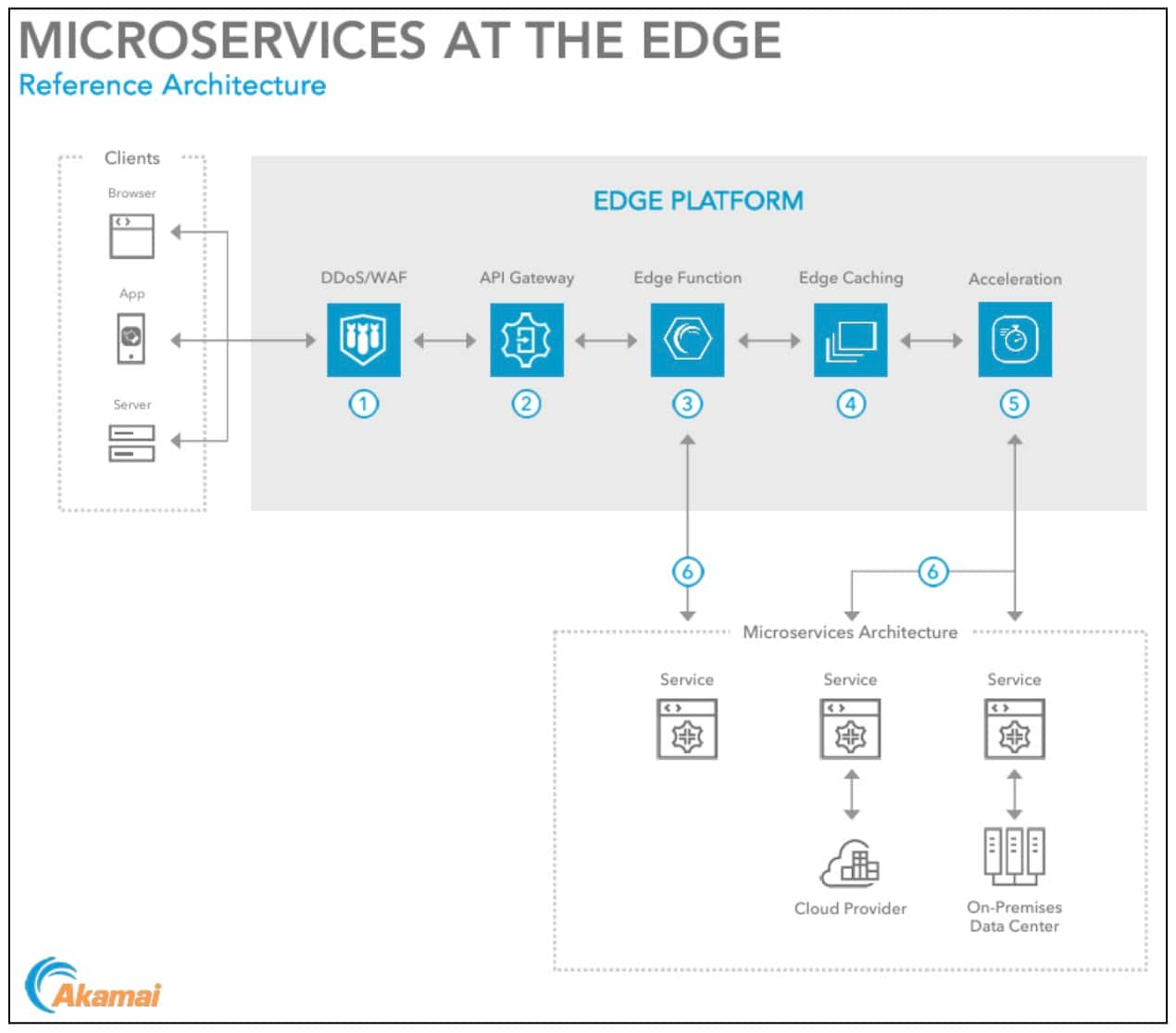What Are the Benefits of a Microservices Architecture?
Ten years ago, most software applications were huge monoliths — meticulously built, but infrequently deployed and challenging to maintain. Then, cloud computing and agile methodologies brought about the emergence and rapid adoption of microservices architectures.
Microservices are a software architecture pattern in which an application is broken down into a collection of loosely coupled services. Each service — or microservice — is designed to perform a specific function and operate independently. This design approach makes the entire system more resilient and adaptable.
The rise of microservices was a significant departure from the traditional monolithic application, offering a modular and agile method of building applications.
In this blog post, we'll explore what microservices are and why there's been a shift from monolithic architectures to microservices. We'll also consider the challenges of adopting microservices, their relationship to APIs and containers, and how solutions from Akamai can help apply this architectural style effectively.
Contents
Understanding microservices architecture
The shift from monolithic to microservices architecture represents a fundamental change in software application development. To deepen our understanding, let’s unpack the differences between these two architectures.
In a monolithic architecture, all components of an application — from input handling to data processing and output generation — are tightly integrated and deployed as a single unit. This has been the traditional approach in software development. Although this approach simplifies the deployment process, it has significant drawbacks as an application grows in size and complexity.
Conversely, a microservices architecture divides an application into a collection of smaller, loosely coupled, interconnected services (Figure 1).
Independent services allow developers to focus their implementation on specific business logic and communication with other services via APIs.
The differences between the architectures
Monolithic architectures and microservices architectures differ in three major ways: in the way they’re coupled, in their relationship to continuous integration and continuous delivery (CI/CD), and in their modularity and development velocity (Table).
Monolithic architecture |
Microservices architecture |
|
Coupling |
Tightly coupled components make scaling and modifying specific parts of an application challenging |
Services are loosely coupled, allowing for independent development, flexible scaling, and easier maintenance |
Relationship to CI/CD |
The size and complexity of an application can make integrating agile practices and CI/CD pipelines cumbersome |
Naturally aligns with agile methodologies and CI/CD practices, enabling faster development cycles and frequent, reliable deployments |
Modularity and development velocity |
Modifying one part of the application often requires refactoring and making changes across the entire application codebase, slowing down development |
Modularity allows small teams to work on different services simultaneously, increasing development velocity and reducing time to market |
Table: The differences between monolithic architectures and microservices architectures
The complexities of modern application development require microservices
This modularity and flexibility of microservices are the primary reasons why many businesses today are shifting away from monolithic architectures (Figure 2). The transition has also changed the infrastructure needs of organizations, away from virtual machines and toward containers and containerization technologies such as Kubernetes and Docker.
With the rise of cloud computing and the increasing need for rapid software delivery, microservices are well-suited to handle the complexities of modern application development.
Key benefits of a microservices architecture
What has this shift to microservices meant for modern software businesses? Let’s explore the key benefits of the transition.The most important benefits of a microservices architecture include:
Enhanced scalability and functionality
In a monolithic system, scaling the application typically involves scaling the entire codebase, even if only one component requires additional resources. This can lead to inefficient use of resources.
With microservices, each service is its own independent entity, allowing specific parts of the application to scale based on demand. In this way, organizations can optimize their resource use to be more efficient and cost-effective, particularly in cloud environments where resources can be allocated dynamically.
APIs play a significant role in facilitating communication between microservices, with an API gateway handling cross-cutting concerns such as authentication and traffic control (Figure 3). APIs allow microservices to interact and share data in a standardized way. This enables services to remain loosely coupled, as updating or adding new features to one service does not disrupt the functionality of others.
Through this combination of independent scalability and API-based communication, microservices architecture offers businesses a way to create flexible, highly performant systems that can adapt to changing demands.
Improved fault isolation and system reliability
One of the greatest strengths of microservices architecture is its resilience. In a monolithic system, if one component fails, it can potentially bring down the entire application, leading to extended downtime and costly repairs.
However, microservices offer a more fault-tolerant design. If one microservice experiences a failure, it doesn’t cause the entire system to crash. Instead, the failure is isolated to that specific service, which can be quickly addressed without affecting other parts of the application.
Many tech giants have adopted a distributed system built on a microservices architecture to ensure high system reliability:
Fault isolation allows for faster recovery times and more reliable systems, as issues can be identified and fixed within self-contained, individual services without interrupting the entire application. In real time, this enhances the ability to meet user demands and maintain service levels, even in the face of unexpected failures.
By focusing on fault isolation and reliability, microservices empower businesses to create more robust, dependable apps that are well-equipped to handle both operational failures and growing user demands.
Streamlined development processes with DevOps integration
The modular nature of microservices means that development teams can work on different services simultaneously, speeding up the development cycle. Each service can be continuously integrated and tested in isolation, reducing bottlenecks and making the CI/CD pipeline more efficient. Automated testing, monitoring, and deployment processes — key to DevOps — fit naturally with a microservices architecture, enabling more frequent and reliable releases.
Upgrades or changes can be made to a single microservice without redeploying the entire application. As a result, updates are deployed faster and more often, allowing businesses to respond to market demands more effectively.
Additionally, DevOps monitoring and observability tools are critical for managing the complexities of microservices. Tools can monitor each service individually, providing granular insights into their performance and health. This level of detail allows teams to identify issues early and resolve them quickly, maintaining system reliability.
By integrating microservices with DevOps workflows, organizations can accelerate development while reducing risks associated with large-scale deployments. This integration of automation, testing, and continuous delivery processes ensures that businesses can iterate faster and more confidently in a competitive landscape.
Flexibility in technology and frameworks
Microservices architecture allows teams to use different and new technologies for each service. This flexibility means developers can design their technology stack to use the best programming language, framework, or tool for the task at hand to optimize performance and functionality across the application.
Upgrading or replacing technologies with microservices is easier since changes to one service don’t impact the entire system. This modular approach also simplifies debugging — issues can be isolated and fixed in specific services without affecting the rest of the application.
By enabling independent choices and updates, microservices help avoid technology lock-in, future-proofing applications for long-term growth.
Evaluating microservices architecture
When evaluating microservices architecture, it’s important to consider both its potential benefits and challenges. While a microservices architecture can significantly improve application design, it also introduces complexities that must be carefully managed.
Additionally, distinguishing microservices from similar architectural patterns, such as service-oriented architecture (SOA), can help clarify whether this approach is the right fit for your organization.
Pros and cons: A balanced view
In the previous section, we covered the following benefits of microservices architecture in considerable detail:
- Scalability
- Fault isolation
- System reliability
- Alignment with DevOps practices
- Modularity and easier maintainability
- Flexibility for developers
While the benefits of microservices are numerous, organizations also need to consider the challenges and disadvantages of microservices. Some of these challenges include the following:
Complexity: Managing an application built on microservices can be complex. As you deal with multiple separate services, you may discover that each one has its own database and interservice communication mechanisms.
Network load: Microservices work together via network communication, so the amount of necessary interservice communication may lead to heavy network traffic. This can lead to network latency and requires careful design to ensure efficient communication.
Data consistency: Ensuring data consistency across different services can be a challenge. Unlike monolithic architectures — in which a single relational database is often used — microservices may have separate databases, requiring robust strategies for data management.
Service discovery: In a microservices environment, services must be able to find and communicate with one another. Implementing this dynamic service discovery mechanism can be complex to manage and maintain.
The transition from monolithic to microservices is most beneficial when an application has grown too large or complex to manage efficiently in a single codebase. Organizations with scaling issues, frequent updates, or a need for greater flexibility and fault tolerance often find that microservices provide the modularity and agility needed to improve performance and maintainability.
Microservices versus service-oriented architecture: What sets them apart?
The SOA is a design pattern in which services provide functionality over a network, usually through standardized protocols like Simple Object Access Protocol (SOAP). While both SOA and microservices focus on breaking down applications into smaller, reusable modules, SOA often relies on centralized components like the enterprise service bus (ESB) for communication, which can lead to more tightly coupled services.
While microservices and SOA share similarities, such as using modular services, microservices offer more independence. Each microservice can be deployed, updated, and scaled individually without coordinating changes across the entire system. In contrast, the more tightly coupled services of SOA make independent deployment and scaling more difficult.
In addition, centralized components in SOA — like the ESB — can introduce single points of failure and increase the risk of system-wide outages. Because of this, SOA is unable to provide the fault isolation and resilience provided by a microservices architecture.
Adopting microservices: Getting started with Akamai
Akamai offers a range of products and services tailored for microservices architectures. As a global leader in cloud computing solutions, Akamai has the infrastructure in place to ensure and enhance the performance, security, and scalability of your microservices.
Many modern software enterprises build their microservices on serverless technologies. For this, Akamai provides Akamai EdgeWorkers to facilitate data storage and serverless compute in geographic locations closer to your end user. With your microservices deployed at the edge, your users will enjoy high performance with the lowest possible latency.
For microservices deployed with containerization technologies, organizations look to the Linode Kubernetes Engine (LKE) and the Akamai App Platform as orchestration solutions for managing application containers and workloads.
Akamai also offers services to cover the use cases that include building microservices-based, cloud native applications deployed at the edge, in the cloud, or within on-premises data centers (Figure 4).
By using Akamai’s global content delivery network (CDN), your web services will be highly performant and available as you capitalize on Akamai’s global edge load balancing and traffic management. For more details, learn about how Akamai handles traffic for your microservices architecture.
Conclusion
Microservices offer unparalleled flexibility, scalability, and speed of deployment. This architectural style, facilitated by advancements in cloud computing and DevOps practices, is well-suited to meet the demands of today's dynamic business environment.
As organizations continue to embrace microservices, an understanding of the associated challenges is essential. Equally important is the choice of tools and platforms for deploying microservices. Akamai can help overcome the inherent complexities of microservices while enhancing their advantages.
Find out more
To learn more about Akamai products and services, get started for free or contact us today.






